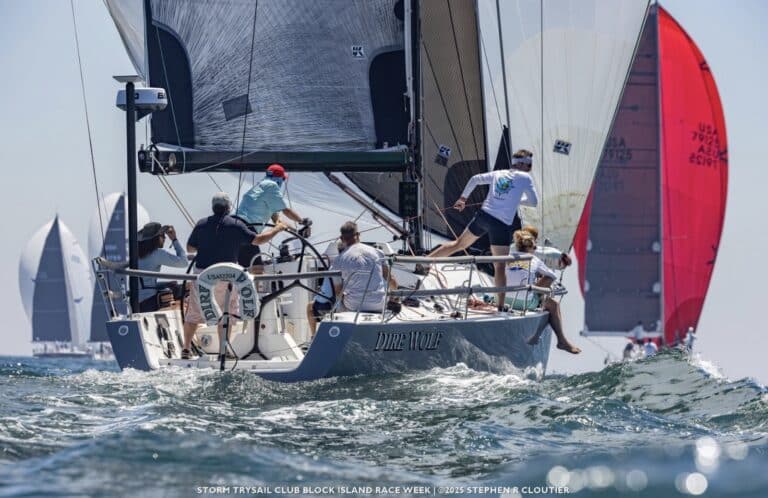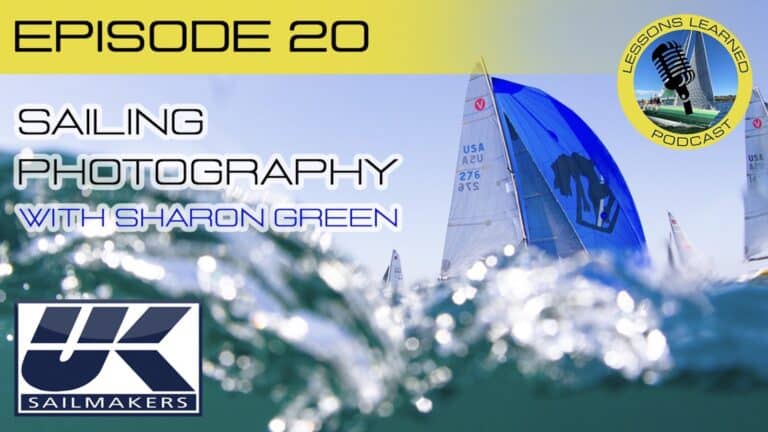My first voyage that required clearing into a foreign country was the 24-hour sail from Cape Canaveral, Florida, to West End on Grand Bahama. I had been on many other boats that had gone through those clearing procedures, but I had never been the responsible one walking up the dock with the ship’s papers and the crews’ passports. The route to the Bahamas was a 133-mile passage that took us southeast across the Gulf Stream. Most cruisers make this trip by heading south along the Florida coast to West Palm Beach where they hang out until the wind goes calm so that they can motor the 60 miles across the Gulf Stream. This plan calls for a short crossing in calm seas. But SOULMATES is a boat that likes to SAIL. Contrary to the dockside chorus of “local experts,” we took off in a 15-20 knot northerly that pushed us directly down the course—and quickly. SOULMATES reveled in the waves as we rode on a broad reach under a single reef and a No. 4 genoa.
For this leg, I sailed with Randy Burr, a friend from my yacht club whose wife had sailed the leg from New York to Cape Canaveral. The two of us set off at 1500 hours so that we would not arrive in the Bahamas in the dark. With the three-knot northerly current flowing against us, the trip took 24 hours. Randy and I didn’t set a watch schedule, but we made sure to relieve each other enough to stay rested. Neither of us used the autopilot, as surfing the waves with a tiller-steered boat was too much fun. After sunrise, the wind dropped to a mild 10-12 knots, which let me shake out the reef.
Clearing into the Bahamas was easy since I followed the procedures posted online. I visited the country’s website, where I found well-explained video instructions that walked me through the forms and payment process. Since I had already printed out my cruising permit on the boat’s portable printer, the whole process went smoothly, with smiles all around. Both the customs and immigration officers were glad to see someone who had followed the instructions, which made the experience easier for everyone. What a relief to walk back to the boat to replace the solid yellow “Quarantine” flag with the Bahamian courtesy flag. We were officially cleared in in under half an hour.





After a good dinner at one of the harborside restaurants, we went to bed early to recover from our overnight passage. In the morning, we walked through the local resort on the way to the beach, where we snorkeled in crystal-clear water. There were turtles, small barracudas, razorfish, sawfish, and clouds of little minnows. Randy found a small stand where they made fresh conch salad to order—a great treat.
Since we had to pay for water as part of the dockage fee, we hosed the salt off the boat after lunch. In the calm conditions, we even raised and rinsed the No. 4 sail, letting it dry before folding it up. We used the full-sized jib for our next leg to Nassau, as the forecast called for milder conditions. Once again, we set off in the early afternoon for the 127-mile passage from West End, around Great Stirrup, and then on to Nassau. It was a full beat for the 65-mile leg from West End to Great Stirrup.
All night long, it felt like we were on the highway for cruise ships heading to and from Nassau. Luckily, we could see them on AIS long before they were visible with the naked eye. With all their cabin lights blazing, they were so bright that it was hard to make out their running lights. Just before we reached Great Stirrup, we had to make four tacks to get around the point. In my less-than-alert state, we got within one-quarter-of-a-mile of one of the behemoths — I had a hard time visualizing her course. Radar would have helped, as would more sleep.
Once around Great Stirrup, the wind faired, and we could just crack the sheets slightly, helping us make better time to Nassau. Randy had been there before and knew the harbor. Even though the chart said we could get under the two bridges to Paradise Island, the top of the mast looked very close to hitting the bridge. Not taking any chances, I dropped our speed to less than one knot as we passed under the highest part of the spans. We had less than two feet to spare—it looked way too close! We all know that even when you have 20 feet to spare going under a bridge, it always looks close. It helped that we went under the bridges an hour after high tide, which gave us an extra foot of air draft.
We dropped the anchor off the Nassau Yacht Club and Randy flew back to New York as he needed to get back to work, but he vowed to return in the future. We had eaten well and got to know each other much better over the course of the two overnight passages. After Randy left, I made plans to cruise to the Exumas singlehanded; that is a story for another day.







Interesting. Been there done that! Everything sounds so the same, comfortable and memorable. Lost my sailor husband a few years back. Contact me for a sail! My brother works for UK sails in Coral Gables